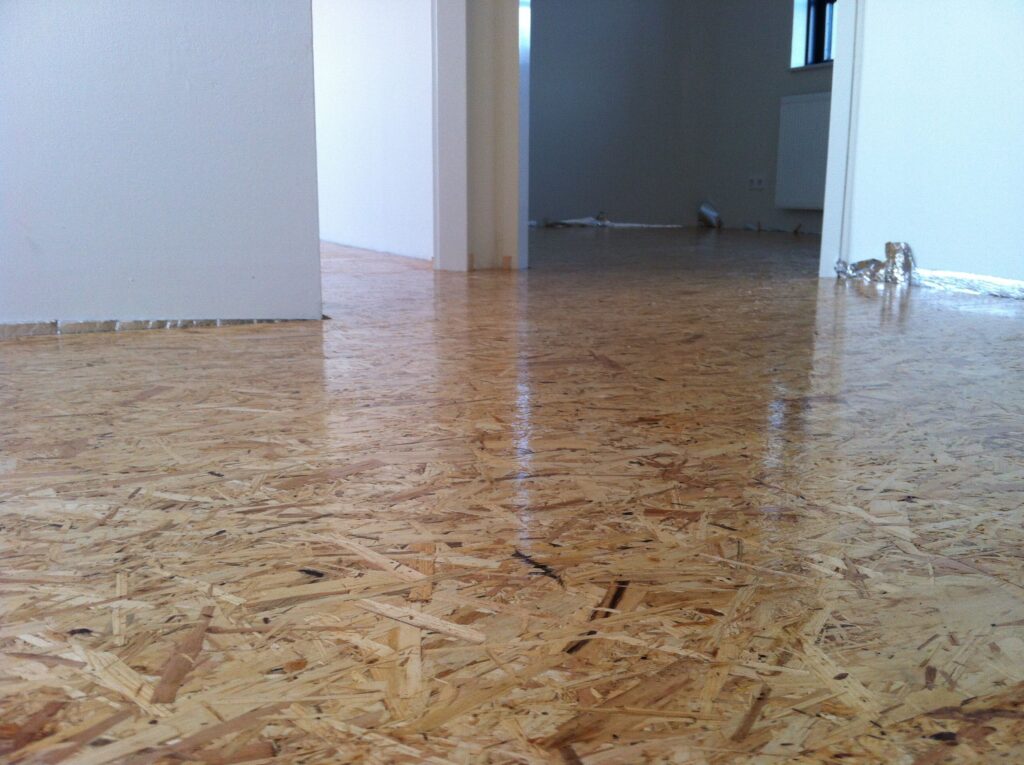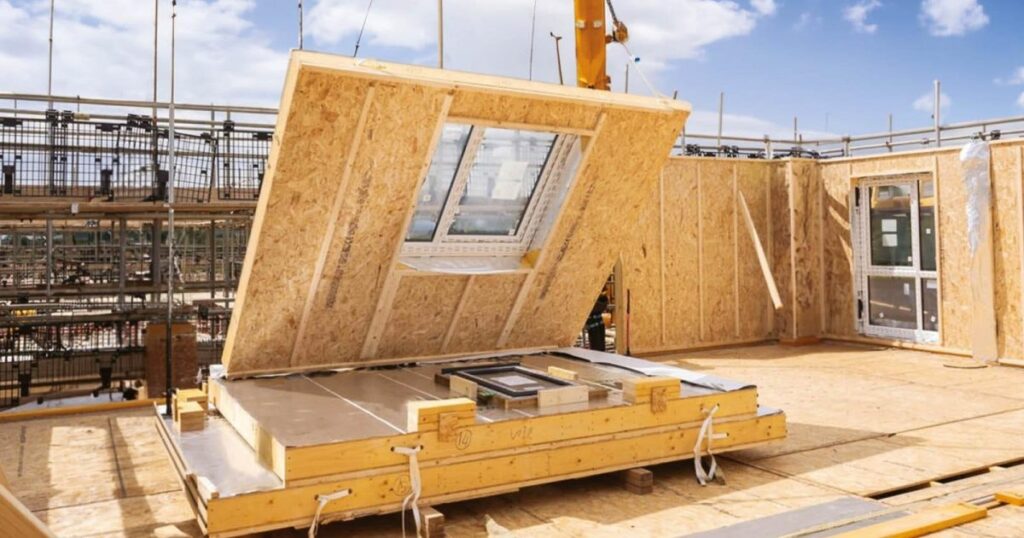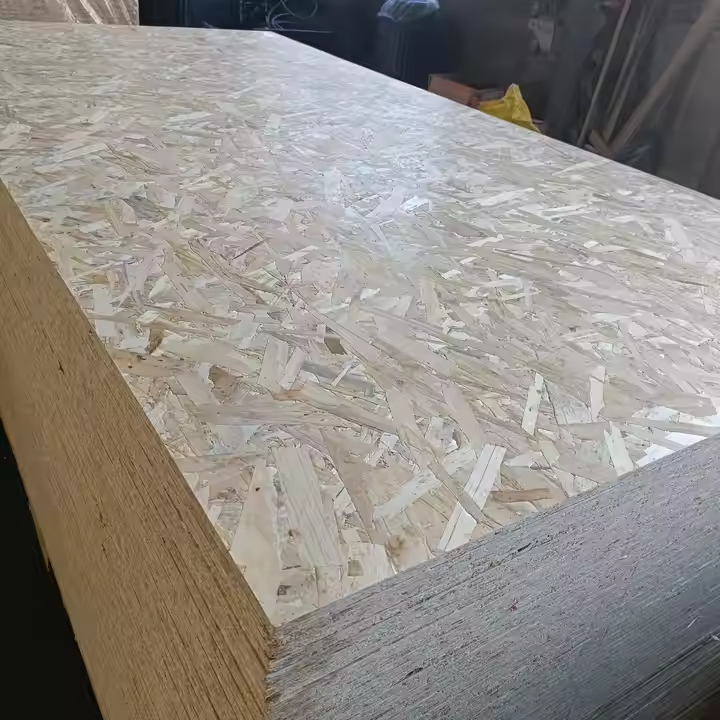The Ultimate Guide to Standard OSB: Everything You Need to Know.
Oriented Strand Board (OSB) is a versatile and widely used building material that has revolutionized the construction industry. Known for its strength, durability, and cost-effectiveness, Standard OSB is a popular choice for a variety of applications, from sheathing to flooring. In this comprehensive guide, we will delve into everything you need to know about Standard OSB, including its benefits, uses, installation tips, and much more.

What is Standard OSB?
Definition and Composition
Standard OSB, or Oriented Strand Board, is an engineered wood product made by compressing layers of wood strands in specific orientations. These strands are bonded together with adhesives and wax, resulting in a strong and durable panel. The orientation of the strands gives OSB its unique strength and stability, making it an ideal material for various construction applications.
History of OSB
OSB was first developed in the late 1970s as an alternative to plywood. Its invention was driven by the need for a more cost-effective and sustainable building material. Over the years, advancements in manufacturing processes have improved the quality and performance of OSB, making it a staple in modern construction.
Benefits of Standard OSB
Strength and Durability
One of the primary advantages of Standard OSB is its exceptional strength. The oriented strands provide a high level of structural integrity, making OSB panels resistant to warping, splitting, and cracking. This durability ensures that structures built with OSB can withstand various environmental conditions.
Cost-Effectiveness
Compared to other building materials like plywood, Standard OSB is more affordable. Its cost-effectiveness does not compromise its quality, making it an attractive option for both residential and commercial construction projects.
Sustainability
OSB is made from fast-growing, renewable wood species, making it an environmentally friendly choice. The manufacturing process also utilizes wood efficiently, reducing waste and promoting sustainability.
Versatility
Standard OSB can be used in a wide range of applications, including wall sheathing, roof decking, subflooring, and more. Its versatility makes it a valuable material for various construction needs.

Caption: OSB is commonly used in construction for sheathing, flooring, and roofing applications.
Applications of Standard OSB
Wall Sheathing
OSB is widely used as wall sheathing in residential and commercial buildings. It provides a strong and stable base for exterior finishes, such as siding and stucco. The panels are easy to install and offer excellent insulation properties.
Roof Decking
Standard OSB is a popular choice for roof decking due to its strength and durability. It provides a solid foundation for roofing materials, such as shingles and tiles, and can withstand the weight of snow and other environmental factors.
Subflooring
OSB is commonly used as subflooring in both residential and commercial buildings. Its smooth surface provides an even base for finished flooring materials, such as carpet, tile, and hardwood. The panels are also resistant to moisture, reducing the risk of warping and swelling.
Furniture and Cabinetry
In addition to construction applications, Standard OSB is also used in the manufacturing of furniture and cabinetry. Its unique texture and appearance make it a popular choice for modern and industrial-style designs.
Packaging
OSB is also used in the packaging industry for creating crates, pallets, and other shipping containers. Its strength and durability ensure that goods are protected during transit.

Tools and Materials
Installation Tips for Standard OSB
Before installing Standard OSB, gather the necessary tools and materials, including:
- OSB panels
- Circular saw or table saw
- Measuring tape
- Chalk line
- Nails or screws
- Adhesive
- Safety gear (gloves, goggles, etc.)
Preparing the Surface
Ensure that the surface where the OSB panels will be installed is clean, dry, and level. Remove any debris or obstacles that could affect the installation process.
Cutting the Panels
Measure the area where the OSB panels will be installed and cut the panels to the appropriate size using a circular saw or table saw. Be sure to wear safety gear while cutting the panels.
Installing the Panels
Start by applying adhesive to the surface where the OSB panels will be installed. Place the first panel in position and secure it with nails or screws. Continue installing the remaining panels, ensuring that they are properly aligned and spaced.
Finishing Touches
Once all the panels are installed, inspect the surface for any gaps or uneven areas. Fill any gaps with wood filler and sand the surface if necessary. Apply a finish, such as paint or sealant, to protect the OSB panels and enhance their appearance.

Maintenance and Care for Standard OSB
Regular Inspections
Regularly inspect OSB panels for any signs of damage, such as cracks, warping, or moisture infiltration. Address any issues promptly to prevent further damage.
Cleaning
Keep OSB panels clean by removing dirt and debris. Use a mild detergent and water to clean the surface, and avoid using harsh chemicals that could damage the panels.
Protecting from Moisture
While Standard OSB is resistant to moisture, it is essential to protect it from prolonged exposure to water. Ensure that the panels are properly sealed and finished to prevent moisture infiltration.
Repairs
If any OSB panels become damaged, replace them as soon as possible. Use the same type of OSB panels and follow the installation guidelines to ensure a proper fit.
Comparing Standard OSB to Other Building Materials
OSB vs. Plywood
Both OSB and plywood are popular building materials, but they have some key differences. OSB is generally more cost-effective and has a more consistent density, while plywood offers a smoother surface and is more resistant to moisture. The choice between the two depends on the specific application and budget.
OSB vs. Particleboard
Particleboard is another engineered wood product, but it is less durable and strong compared to OSB. OSB is a better choice for structural applications, while particleboard is more suitable for non-structural uses, such as furniture and cabinetry.
OSB vs. MDF
Medium-Density Fiberboard (MDF) is a dense and smooth engineered wood product, but it lacks the strength and durability of OSB. OSB is more suitable for construction applications, while MDF is often used for decorative purposes.
Environmental Impact of Standard OSB
Sustainable Sourcing
OSB is made from fast-growing, renewable wood species, making it an environmentally friendly choice. The manufacturing process also utilizes wood efficiently, reducing waste and promoting sustainability.
Recycling and Disposal
OSB panels can be recycled or repurposed at the end of their lifespan. Proper disposal and recycling of OSB help reduce its environmental impact and promote sustainability.
Energy Efficiency
OSB panels offer excellent insulation properties, contributing to energy efficiency in buildings. Properly installed OSB can help reduce heating and cooling costs, making it an eco-friendly choice for construction.
Frequently Asked Questions (FAQs)
What is the difference between OSB and plywood?
OSB and plywood are both engineered wood products, but they have different compositions and properties. OSB is made from compressed wood strands, while plywood is made from thin layers of wood veneer. OSB is generally more cost-effective and has a more consistent density, while plywood offers a smoother surface and is more resistant to moisture.
Can OSB be used for exterior applications?
Yes, OSB can be used for exterior applications, such as wall sheathing and roof decking. However, it is essential to ensure that the OSB panels are properly sealed and finished to protect them from moisture and other environmental factors.
Is OSB stronger than plywood?
OSB and plywood have similar strength properties, but OSB is generally more consistent in density and less prone to warping. However, plywood may be stronger in certain applications, such as when a smoother surface is required.
How do I protect OSB from moisture?
To protect OSB from moisture, ensure that the panels are properly sealed and finished. Use a waterproof sealant or paint to create a barrier against moisture. Additionally, avoid prolonged exposure to water and address any leaks or water damage promptly.
Can OSB be painted?
Yes, OSB can be painted. However, it is essential to prepare the surface properly by sanding and priming it before applying paint. This will ensure a smooth and even finish.
Is OSB environmentally friendly?
Yes, OSB is considered environmentally friendly because it is made from fast-growing, renewable wood species. The manufacturing process also utilizes wood efficiently, reducing waste and promoting sustainability.
How long does OSB last?
The lifespan of OSB depends on various factors, such as the quality of the panels, the installation process, and the environmental conditions. With proper maintenance and care, OSB can last for several decades.
Can OSB be used for flooring?
Yes, OSB is commonly used as subflooring in both residential and commercial buildings. Its smooth surface provides an even base for finished flooring materials, such as carpet, tile, and hardwood.
What are the standard sizes of OSB panels?
Standard OSB panels are typically available in 4-foot by 8-foot sheets, with thicknesses ranging from 1/4 inch to 1 inch. However, custom sizes may also be available depending on the manufacturer.
Is OSB fire-resistant?
OSB is not inherently fire-resistant, but it can be treated with fire-retardant chemicals to improve its fire resistance. It is essential to check the manufacturer’s specifications and local building codes for fire resistance requirements.
Conclusion
Standard OSB is a versatile, durable, and cost-effective building material that has become a staple in modern construction. Its strength, sustainability, and wide range of applications make it an ideal choice for various projects, from wall sheathing to subflooring. By understanding the benefits, uses, and installation tips for Standard OSB, you can make informed decisions for your construction needs. Whether you’re a DIY enthusiast or a professional contractor, Standard OSB offers a reliable and efficient solution for your building projects.

